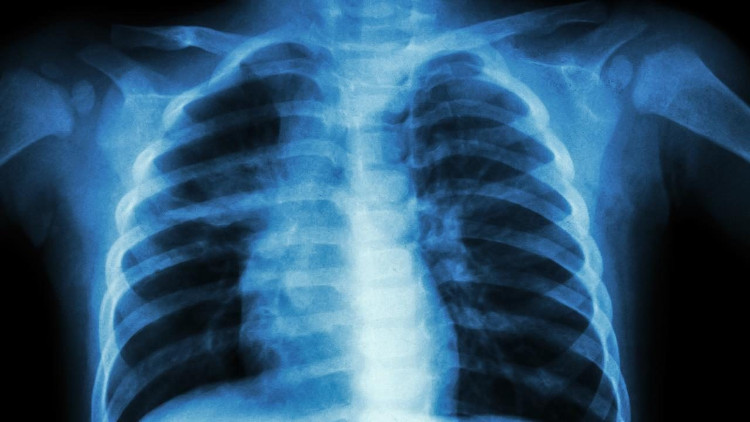Amazing discovery: Lungs not only breathe but can produce blood
Researchers found that, with the body of mammals, the lungs play a much more complex role than what we think. New research results show that the lungs are not only involved in breathing, but they can also create blood.
In mouse-related experiments, the team found that every hour the rat's lungs produced more than 10 million platelets (small blood cells). This is equivalent to the majority of platelets that are created in the circulatory cycle of animals.
The results go against the hypothesis that bone marrow produces all blood cells that last for decades.
Researchers from the University of California, San Francisco have also discovered a group of blood cells of unknown origin. They then guessed that these blood cells came from inside the lung cells .
One of the researchers, Mark R. Looney said: "Finding us a strong conclusion about the lungs. They not only perform respiratory function but also an important organ in the formation. "The blood cells are important. The results we observed in mice suggest that the lungs can play an important role in blood formation in the human body."

Lungs can produce blood.(Photo: Shutterstock).
According to previous theories, the lungs produce only a limited number of platelets. Platelet-forming cells called megakaryocytes have been predetermined in the lungs. Here, a process called haematopoieis is thought to produce oxygen-filled red blood cells, lymphocytes and platelets. These are the blood components needed to clot when the body has wounds that cause bleeding.
However, according to scientists' observations, megakariocytes in lung tissue not only produce a few - but most of the platelets in the body. It seems that the scientific community has missed one of the important biological processes.
This study was carried out by a new technology device based on a two-photon x-ray image. Techniques similar to technology are used by another team to find a new function of the brain.
This process involves inserting a substance called green fluorescent protein (GFP) into the mouse genome. This is a natural protein produced by bioluminescent animals such as jellyfish and does not harm living cells.
When mouse cells of the mouse move throughout the body, they start to glow bright green. This allows the team to follow their path. They found that the number of megakariocytes produced platelets in very large lung tissue. This is very surprising because blood was only related to bone marrow in the past.
A team member - Emma Lefrançais said: "When we discovered a large amount of megakaryocytes in the lungs, we knew we had to keep a close eye on this."
Every hour, megakaryocytes in lung mice produce more than 10 million platelet cells. This means, at least half of the body's platelets come from the lungs.
Further experiments also showed that large amounts of hidden blood cells and megakaricocyte precursor cells (cells that make megakaricocytes and erythrocytes) lie just outside the lung tissue. When monitoring the entire life cycle of megakaryocytes, the researchers suggest that they may originate from the bone marrow, then reach the lungs - where they start producing platelets.
Researcher Guadalupe Ortiz-Muñoz said: "It is fascinating to discover that megakaryocytes move from the bone marrow to the lungs to produce platelets. It is possible that the lungs are an ideal bioreactor for producing urine. because of the mechanical force of blood, or maybe because of molecular signals that we don't know yet. "

At least half of the body's platelets come from the lungs.
Scientists hope that this discovery may have an effect on how to treat disorders such as pneumonia, bleeding, and future implants. Treatment by lung transplantation with precursor cells of fluorescent megacarcinum into mice with low platelet count.
Transplants produce a series of platelets, which can help quickly restore platelet count so that it returns to normal. The effectiveness of treatment lasts for several months.
Another test examined the role of bone marrow when they did not produce blood. The team had lung transplants with fluorescent megacarcinum cells in mice without blood stem cells in the bone marrow.
Researcher Michael Irving said that he found the transplanted lung fluorescence cells reached the bone marrow. Here, they not only produce platelets, but also other important blood components, such as neutrophils, B cells and T cells.
These findings need to be recreated in humans before we know that a similar process is occurring in the human body. Research is a good example of hidden functions in institutions that have not yet been discovered by the scientific community. It is also an important document for scientists to study the coordination to produce blood from the lungs and bone marrow.
This study was published in the journal Nature.
- Video: What will your lungs do if you breathe deeply?
- 4 signs of sleep warning your lungs are seriously injured
- Air pollution causes cardiac arrhythmias and blood clots
- Artificial mini brains can produce blood vessels themselves
- Beautiful photos: Fish breathe by lungs with their feet
- How do tadpoles breathe underwater?
- Does the lungs heal itself if we quit smoking?
- Breathing deeply helps to reduce anxiety and stress
- How does white blood cells help us fight disease?
- Amazing discovery of the human body
- 6 warning signs of dangerous blood clots
- Nose - the guard of the lungs
 Green tea cleans teeth better than mouthwash?
Green tea cleans teeth better than mouthwash? Death kiss: This is why you should not let anyone kiss your baby's lips
Death kiss: This is why you should not let anyone kiss your baby's lips What is salmonellosis?
What is salmonellosis? Caution should be exercised when using aloe vera through eating and drinking
Caution should be exercised when using aloe vera through eating and drinking